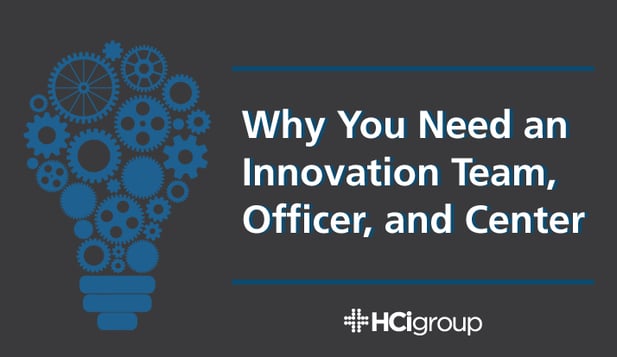Healthcare Innovation: Why You Need an Innovation Team


Healthcare Innovation is the creative adoption and usage of technology that works to improve the quality of healthcare by enabling personalized care models to predict when adverse healthcare conditions may occur and to better manage the health status of a patient real-time. Obviously the adoption and implementation of innovative tools will require significant changes to existing patient care models and organization restructuring to focus on personalized care.
Advancing technologies can enable better patient interaction, wellness management processes, and predictive analytics that focus on keeping patients healthy. As these technologies advance, so will the needs and methods that healthcare facilities have become accustomed to. So, what can your organization do to keep up with the times and use innovation to better their facility?
HCIs Senior Vice President of Innovation and Technology Solutions, John McDaniel, has a framework for how to establish and build an innovation team – from the Chief Innovation Officer to an innovation council, and eventually up to an innovation center.
1) CEOs and the Board
Before getting into the team that will be responsible fordirecting and managing innovation within your organization, it is important to keep in mind that a healthcare facility must first get their CEO, executive team and Board of Directors to see eye-to-eye with the idea. After all, the agents of change within a healthcare organization are ultimately the CEO and the Board of Directors.
Innovation is a change in the way an organization most likely has done business for a long time, and this change will probably cause some members of your staff to be skeptical. A change in the way an organization has done things may be faced with some resiliency, but the world is changing, technology is changing, and it is the responsibility of the CEO to make the decision for the better of their organization. Creation of an Innovation Strategy is essential and will assist the CEO and the Board with finding the right candidate to be their Chief Innovation Officer.
2) Chief Innovation Officer
When using innovation to influence a healthcare facility, one of the first things that must be done is establishing a Chief Innovation Officer. Innovation is a journey, not a destination, and the Chief Innovation Officer will be responsible with creating the roadmap for this journey, as well as being able to think outside the box with relation to how healthcare is traditionally delivered. This individual will be the internal champion at the executive level for innovation and change, and will have an understanding of the process of healthcare today, as well as what it’s going to evolve into.In addition, the Chief Innovation Officer is going to need to be a great communicator who can work within a team concept. They will need to be able to use their understanding of information technology and the clinical process in order to work with constituents to create the roadmap for their innovation journey. It can be very challenging to find an individual who exhibits all of these qualities – however, there are a number of organizations who have found resources such as these who are doing an outstanding job in helping transform organizations into a new models of care. They cannot do this alone, however, which is why they will look to create an innovation council.
3) Innovation Council
An innovation council should consist of a combination of information technology, operations resources, planning resources, and clinicians. In addition, a good practice when forming an innovation council is to include at least a patient or two, because they will have a first-hand understanding of how they feel patients should be engaged, or how patients would like to be communicated with from a clinician (whether it be something such as TeleHealth or in person). Build a process or methodology around engaging with operational resources, clinical resources, and anyone else who is a constituent of your services.
Once your council has been assembled, you can begin to build a process where ideas are germinated and can be presented electronically. Your innovation council can then look at these ideas and begin to sift through them and decide whether or not they make sense based on your organizations strategic plan, or if they could be a current operational improvement, for example. They will then decide which ideas they will move forward with, and put together a high-level business case of what your organization will need to invest, what the change opportunity is, and how it can affect revenue. This innovation council will ultimately be the oversight for the organization in bridging operations with where the future of healthcare is going.
4) Innovation Center
The ideas that your innovation council has conceived and approved will need to be tested, and that is where the innovation center comes in. Say, for instance, your innovation council has looked at 25 different projects, and needs to see how they will work. The innovation center can build or test these new solutions, and can see exactly how they will impact the operations today, and how they will help to transform your organization into the future. The innovation center is a lab, basically, that allows your organization to engage with partners to either provide a solution to a problem that you will be addressing or work towards the development of something completely new.
There are already some very good innovation centers out there, and they work to develop new products that can create a huge ROI in their organization, and have begun to take those and resell them. In some instances, the revenue that came from these resold technologies and applications was even greater than the annual revenue that was associated with patient care. They work with sophisticated, new concepts such as 3D printing, wearables, biomedical devices and their example is a great indicator of how beneficial innovation can be to a healthcare organization.


